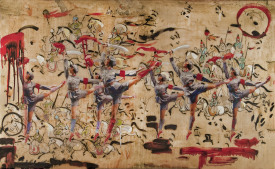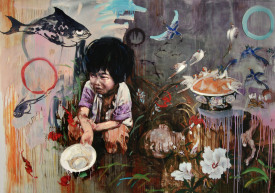Abhishek Kumar
February 17, ON THIS DAY
“I keep my eyes open like I’m a hunter. I’m hunting, I’m capturing visual references. So maybe that’s my tool, just myself with open eyes and open mind. Some people are greedy for money. I’m greedy for images. Not that every image will become a painting, but just looking at them makes me think, makes me alive, or allows me to have another association.”
Hung Liu
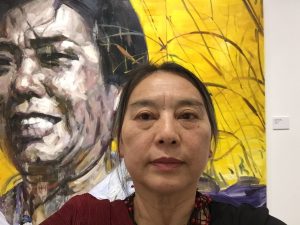
Hung Liu is a Chinese-born American artist specializing in oil painting and mixed media. She is most known for her portraits of Chinese historical figures and her large, layered works that explore the complexities of Chinese-American identity. Liu’s art is an amalgam of traditional Chinese and contemporary Western art, with an emphasis on Chinese history and culture. Her works often depict mundane scenes from everyday life, Chinese folklore, and Chinese historical events. Liu was born in China in 1948 and grew up during the Cultural Revolution. After studying mural painting at the Central Academy of Fine Arts in Beijing, she moved to the United States in 1984 to pursue her MFA in painting from the University of California, San Diego.
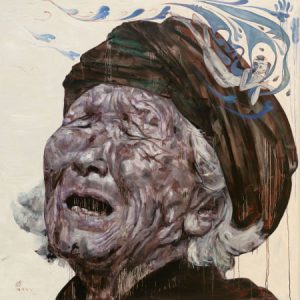
Liu’s work is informed by her personal experience of displacement and her search for identity and belonging. Her paintings explore themes of memory, history, nostalgia, and displacement. She often paints on found materials such as wood, fabric, and newspaper, creating a textured surface to reflect the layered nature of her identity. She also incorporates elements of Chinese traditional painting and calligraphy into her work. In her art, Liu focuses on the human experience, often painting stories that are often overlooked or forgotten. She uses her art to explore Chinese cultural identity and the stories of those who have been forgotten in Chinese history. Her work is often inspired by her own experiences as a Chinese immigrant in the United States.
Her work reflects her personal experiences and her connection to her cultural roots. Hung Liu often incorporates mythological symbols, such as dragons and phoenixes, into her work. These symbols are deeply rooted in Chinese culture and are associated with power, strength, and transformation. In some of her paintings, Liu portrays mythical figures from Chinese mythology, such as the goddess Guanyin. By depicting these figures, she is paying homage to her cultural heritage and using them as a way to connect with her audience.
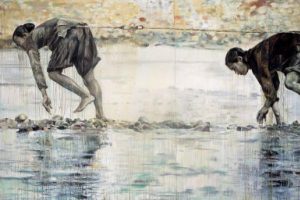
Hung Liu’s art often explores historical events in China, such as the Cultural Revolution. She uses mythology as a way to explore and comment on these events, showing how they are intertwined with China’s cultural and mythical history. Liu’s art is often narrative and tells a story. In some of her paintings, she incorporates characters and stories from Chinese mythology. These stories often have a moral or lesson and help to connect the viewer with Chinese cultural values.
Migration is a significant theme in Hung Liu’s art. As an immigrant and a Chinese-American artist, her work explores the experiences of migration, displacement, and cultural identity. In some of her paintings, Liu depicts the physical journey of migration, often showing people in transit or arriving in a new place. These paintings capture the sense of uncertainty and dislocation that comes with migration. Many of Hung Liu’s paintings are based on old photographs, including those of her own family members. By using these images, she is exploring the role of memory and nostalgia in the migrant experience. Her work captures the longing for home and the sense of loss that can come with migration.
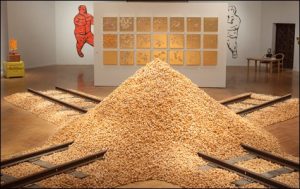
Hung Liu’s art often combines Chinese and Western artistic traditions, reflecting her own experiences of cultural exchange. Her work shows how migration can lead to a blending of cultures and the emergence of new artistic forms. Through her art, Hung Liu explores the complex process of identity formation that takes place in the context of migration. Her work shows how migrants navigate the tension between maintaining a connection to their cultural roots and adapting to a new cultural environment.
One of Liu’s most notable works is “Jiu Jin Shan (Old Gold Mountain),” a series of paintings that explore the experiences of Chinese immigrants in the United States. The series is based on historical photographs of Chinese immigrants, which Liu has transformed into large-scale paintings that depict the struggles and triumphs of the immigrant experience. The series has been exhibited in major museums around the world and has been recognized for its powerful depiction of the immigrant experience.

In addition to her painting, Liu is also an accomplished sculptor, creating works in bronze, paper, and resin. She has also written and illustrated several books, including a memoir entitled The Last Communist. Liu has also been a mentor and teacher to many emerging artists. She has taught at numerous universities and art schools, and has been recognized for her contributions to art education.
Liu’s art has been described as a bridge between traditional Chinese painting and Western contemporary art. Her work combines elements of both, creating a unique and powerful artistic style that is both personal and universal. Her paintings have been exhibited in major museums and galleries around the world, and her contributions to the art world have been widely recognized. Hung Liu’s life and art are a testament to the power of the immigrant experience and the importance of cultural heritage in shaping artistic expression. Her work continues to inspire and challenge audiences, and she remains a leading figure in the contemporary art world.
